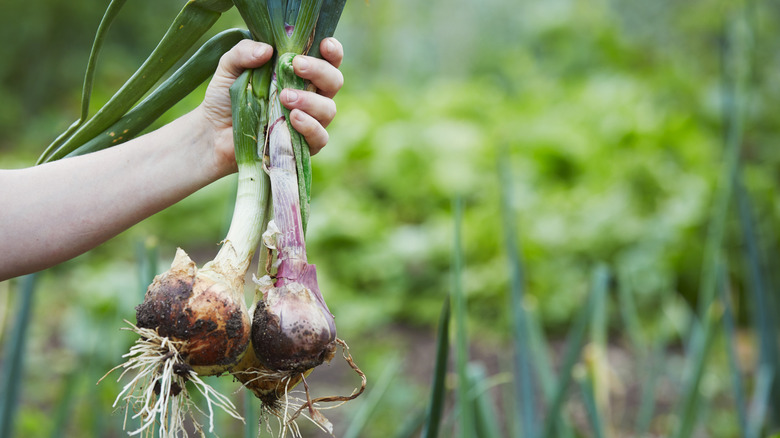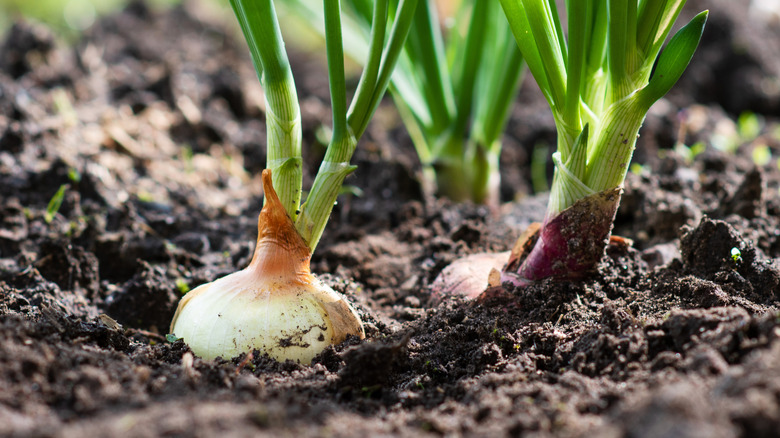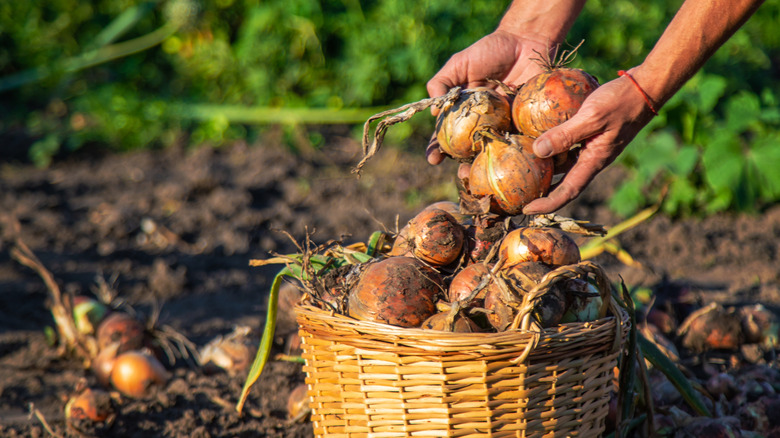How Long Do Onions Really Take To Grow (& How Do You Know They're Ready To Harvest)?
The common onion (Allium cepa) is a fantastic crop to grow for both beginner and expert gardeners alike. Easy to maintain and reliable, onions are a staple in many vegetable patches around the world. But if you are new to growing vegetables, it can be difficult to determine when an onion is mature. The bulb is under the soil, so how do we know when the crop is ready to pick? Thankfully, you don't need a sixth sense or X-ray vision for this! You just need to know what signs to look for on your onion plant and how long your variety of onion takes to grow.
On average, onions take 85 to 120 days to create mature bulbs. However, this may change depending on the type you are growing, your region, and if you are propagating from onion sets or onion seeds. Sets will produce an earlier crop as they have had a head start on their growth. Whether your onions are long-day or short-day, and your location, will also affect their growing time. Short-day onions need 11 to 12 hours of daylight a day, whereas long-day onions need 14 or more. So, if you plant long-day onions somewhere that lacks sufficient sunlight, growth will be slower.
Factors that affect onions' growing time
The weather plays an important role in onion growth, and issues with rain or sunlight can delay your plant's development. Onions require full sun, and too many overcast days will cause them to grow more slowly. Planting a long-day crop in a location where there isn't enough sunlight is a common mistake when growing onions, so ensure you are buying a suitable variety. Furthermore, they need constant moisture to ensure steady and healthy growth. If there is a lack of rain in your area and you are not watering them enough, the development of the bulbs will be stunted. But watch out for overwatering! The soil in which your onions are planted must be well-drained, as waterlogged soil can cause bulbs to double or split. Like any vegetable, a balance is essential for growing healthy onions.
Weeds in the surrounding area can also affect the growth of your onions. Onions have a shallow root system, and this means they are quite sensitive to competition. Too many weeds will mean that the nutrients in the soil are not going to your vegetables, but to the weeds. Get rid of the weeds from your garden as soon as they appear, but be careful when using tools, as you do not want to damage your onion bulbs. Pulling out the weeds by hand is a safe way to get rid of them while also protecting your crop.
Signs that your onions are ready to harvest
Growing your own vegetables is exciting, but don't let that excitement push you to dig up your onions too soon. Onions are ready to be harvested when the majority of their leaves have wilted and fallen over. However, you don't want to wait until the leaves have died down completely. If you wait too long, the bulbs may rot or go to seed. Before you harvest your onion, check the neck of the stem where it joins the bulb. If the neck is dried out and papery, your onions are mature enough to harvest.
If your onions look ready, put your hand into the soil to check them. If they are round and hard, they are ready to go! When harvesting your onions, it is essential to be careful. Damage to your onions can make them susceptible to rot when stored. Gently pull your onions from the soil or use a garden fork just under the bulbs to bring them up.


